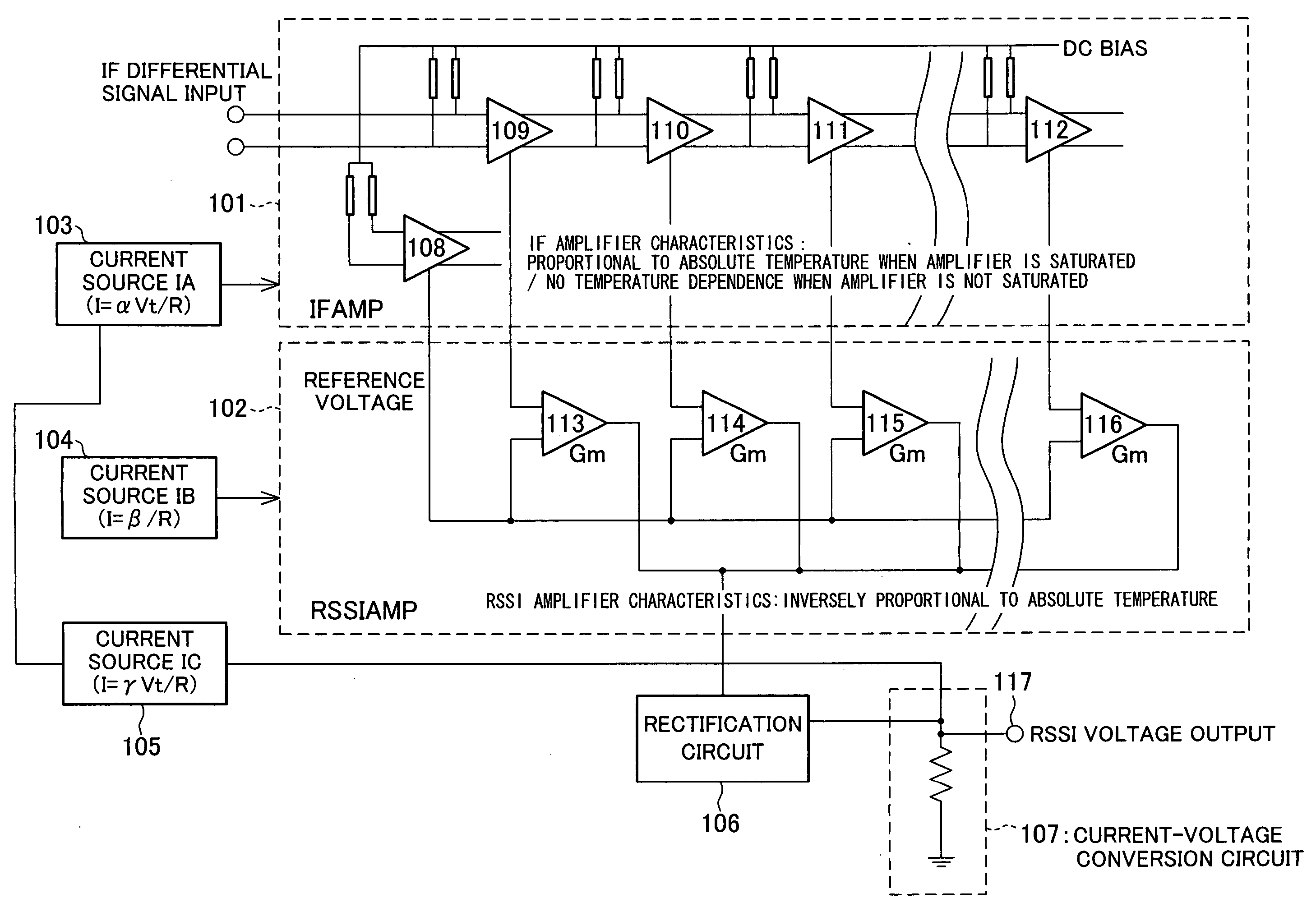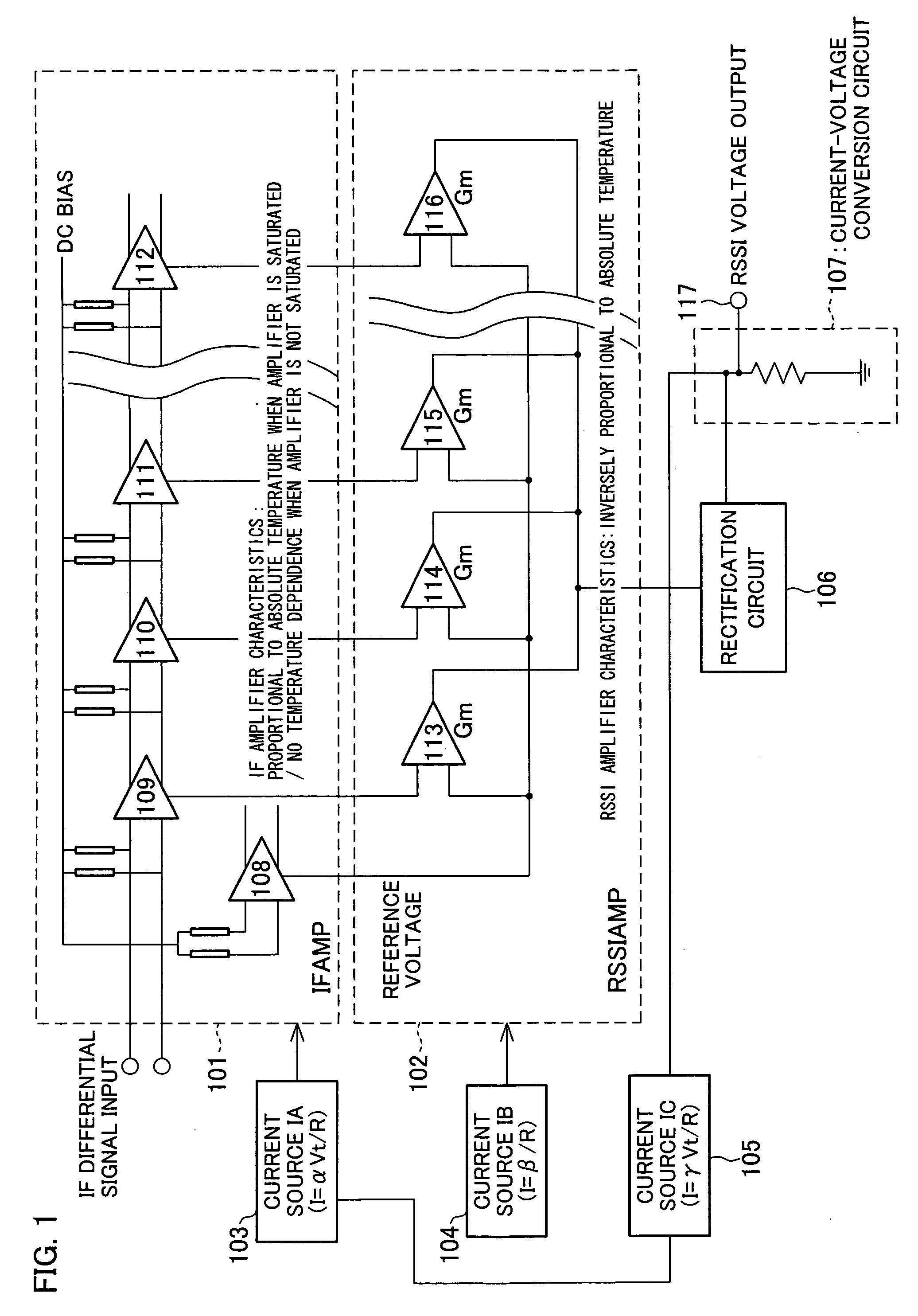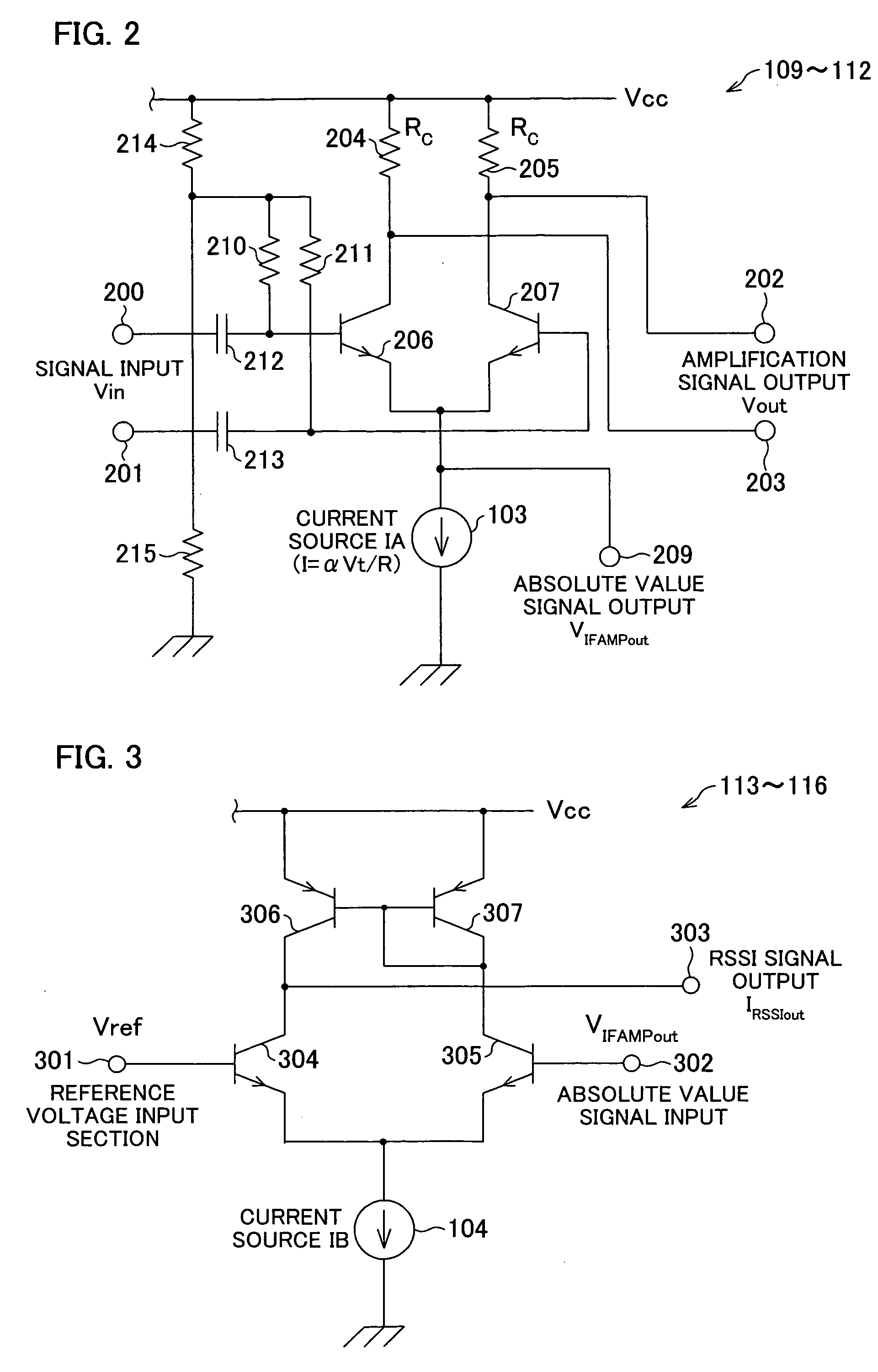Received signal strength measurement circuit, received signal strength detection circuit and wireless receiver
a technology of received signal strength and measurement circuit, which is applied in the direction of amplifier combinations, instruments, transmission monitoring, etc., can solve the problems of difficult downsizing or integrating circuits, difficult to measure, and complex circuit arrangements, etc., to achieve improved communication characteristics, stable measurement, and increased reception accuracy
- Summary
- Abstract
- Description
- Claims
- Application Information
AI Technical Summary
Benefits of technology
Problems solved by technology
Method used
Image
Examples
first embodiment
[0042] An embodiment of the present invention is explained below in detail with reference to figures. FIG. 1 represents an embodiment showing an overall structure of an RSSI circuit of the present invention. The RSSI circuit includes an IF amplifier 101, an RSSI amplifier (voltage-current conversion section) 102, a current source IA 103, a current source IB 104, a current source IC 105, a rectification circuit 106, and a current-voltage conversion circuit (voltage output section) 107.
[0043] The IF amplifier 101 is constituted by cascading plural stages of amplifiers (differential amplifiers) 109 through 112. Each of the amplifiers 109 through 112 constituting the IF amplifier amplifies an inputted signal and outputs the amplified signal to the amplifier of the next stage.
[0044] In addition to an amplifying function, each of the amplifiers 109 through 112 serves to output an absolute value signal of the magnitude proportional to an absolute value of the inputted signal. The absolut...
PUM
 Login to View More
Login to View More Abstract
Description
Claims
Application Information
 Login to View More
Login to View More - R&D
- Intellectual Property
- Life Sciences
- Materials
- Tech Scout
- Unparalleled Data Quality
- Higher Quality Content
- 60% Fewer Hallucinations
Browse by: Latest US Patents, China's latest patents, Technical Efficacy Thesaurus, Application Domain, Technology Topic, Popular Technical Reports.
© 2025 PatSnap. All rights reserved.Legal|Privacy policy|Modern Slavery Act Transparency Statement|Sitemap|About US| Contact US: help@patsnap.com



